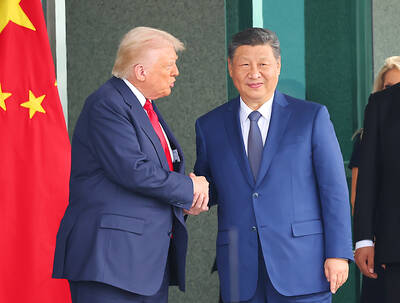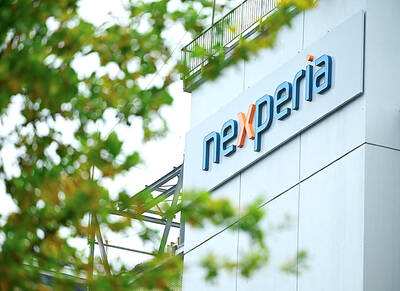IBM Corp, the world's No. 1 server vendor, yesterday announced that it would establish a server development center here -- its first outside the US.
"Taiwan's R&D [research and development] and manufacturing capability makes it an excellent choice for the opening of IBM's second xSeries Development center," Rodney Adkins, vice president of development at IBM's systems group, said in the press conference yesterday.
The country's complete supply chain, IBM's partnership with local manufacturers and government support made Taiwan stand out from other possible contenders for the new center, IBM Taiwan's general manager Jason Hsu (
The new center is located in the Nankang Software Park (
The Nankang center has 70 employees, including 20 expatriates from IBM's headquarters in the US. Hsu said the number of employees is expected to rise to 100.
The new center will focus on high volume Intel-based servers and the first batch of products developed by the center is expected to be shipped by the end of this year, Adkins said.
According to research house International Data Corp (IDC), IBM held onto its No. 1 spot in the worldwide server systems market with a 29.7 percent market share in factory revenue in the first quarter of this year, followed by Hewlett-Packard Co and Sun Microsystems.
IBM's new center could help sharpen its competitiveness through closer ties with its contract makers, which would help shorten R&D time, expedite time to market and reduce costs by about 20 percent, said Dixon Cheng (
Cheng attended the press conference along with representatives from other contract makers for IBM, including Asustek Computer Co (
The global server market is expected to grow by 5 percent this year to US$53 billion -- driven by a resurgent corporate demands from late last year -- and maintain a compound annual growth rate of 3.8 percent to US$60.8 billion in 2008, according to IDC.
IDC also predicts that this country's server market will grow by 9.4 percent to US$327 million in 2008 from US$211 million this year.
The Nankang center could help IBM tap the sizeable server market of small and medium businesses, which account for 98 percent of the nation's industry, Adkins said.
In other industry developments, Dell Taiwan yesterday launched two new models of corporate desktop computers.
Since about 30 percent of the installed computers worldwide are at least three years old, research house Gartner Inc estimates that replacement demand will reach 100 million computers this year and 120 million units next year.

TEMPORARY TRUCE: China has made concessions to ease rare earth trade controls, among others, while Washington holds fire on a 100% tariff on all Chinese goods China is effectively suspending implementation of additional export controls on rare earth metals and terminating investigations targeting US companies in the semiconductor supply chain, the White House announced. The White House on Saturday issued a fact sheet outlining some details of the trade pact agreed to earlier in the week by US President Donald Trump and Chinese President Xi Jinping (習近平) that aimed to ease tensions between the world’s two largest economies. Under the deal, China is to issue general licenses valid for exports of rare earths, gallium, germanium, antimony and graphite “for the benefit of US end users and their suppliers

Dutch chipmaker Nexperia BV’s China unit yesterday said that it had established sufficient inventories of finished goods and works-in-progress, and that its supply chain remained secure and stable after its parent halted wafer supplies. The Dutch company suspended supplies of wafers to its Chinese assembly plant a week ago, calling it “a direct consequence of the local management’s recent failure to comply with the agreed contractual payment terms,” Reuters reported on Friday last week. Its China unit called Nexperia’s suspension “unilateral” and “extremely irresponsible,” adding that the Dutch parent’s claim about contractual payment was “misleading and highly deceptive,” according to a statement

The Chinese government has issued guidance requiring new data center projects that have received any state funds to only use domestically made artificial intelligence (AI) chips, two sources familiar with the matter told Reuters. In recent weeks, Chinese regulatory authorities have ordered such data centers that are less than 30 percent complete to remove all installed foreign chips, or cancel plans to purchase them, while projects in a more advanced stage would be decided on a case-by-case basis, the sources said. The move could represent one of China’s most aggressive steps yet to eliminate foreign technology from its critical infrastructure amid a

Artificial intelligence (AI) giant Nvidia Corp’s most advanced chips would be reserved for US companies and kept out of China and other countries, US President Donald Trump said. During an interview that aired on Sunday on CBS’ 60 Minutes program and in comments to reporters aboard Air Force One, Trump said only US customers should have access to the top-end Blackwell chips offered by Nvidia, the world’s most valuable company by market capitalization. “The most advanced, we will not let anybody have them other than the United States,” he told CBS, echoing remarks made earlier to reporters as he returned to Washington